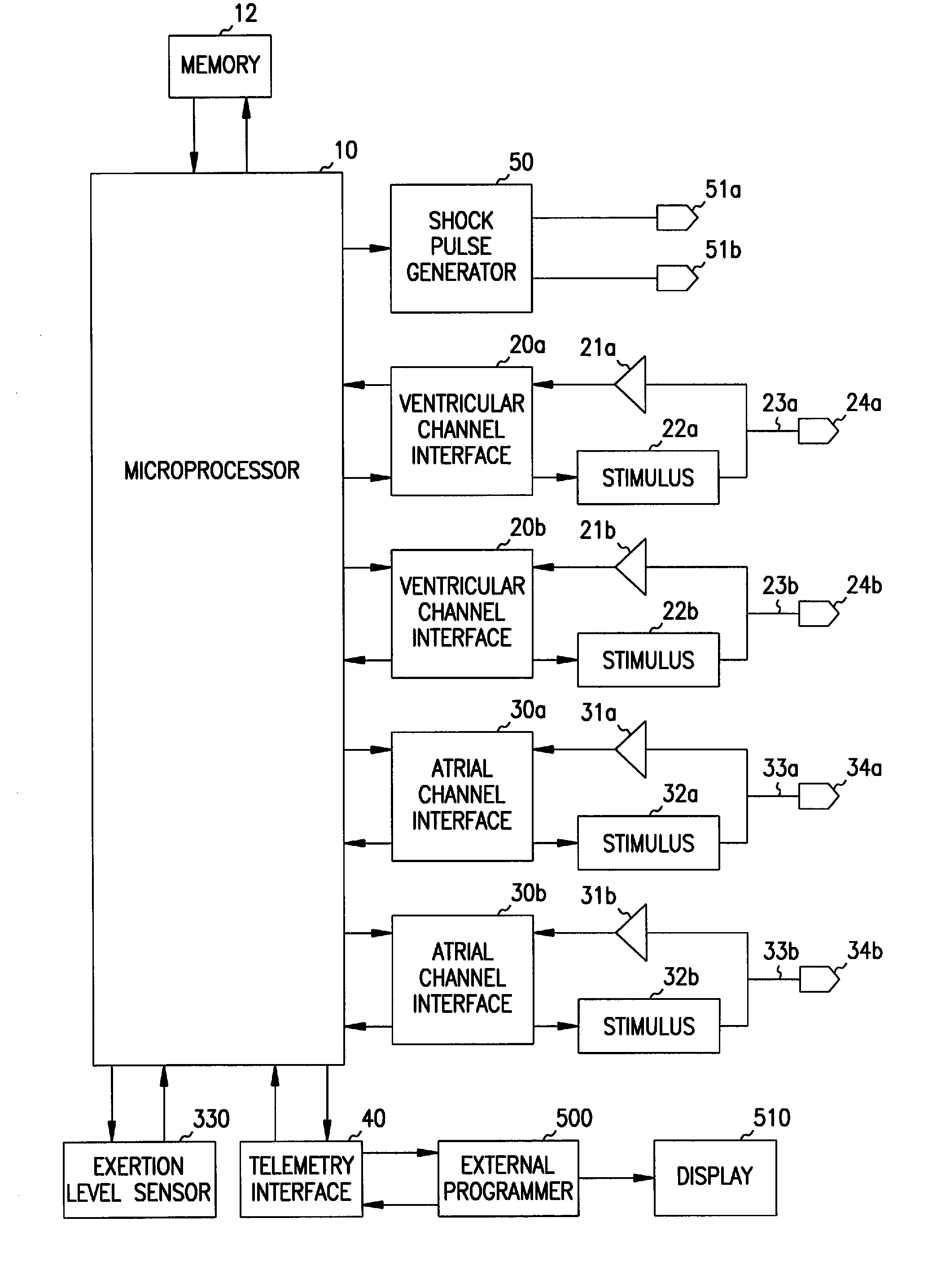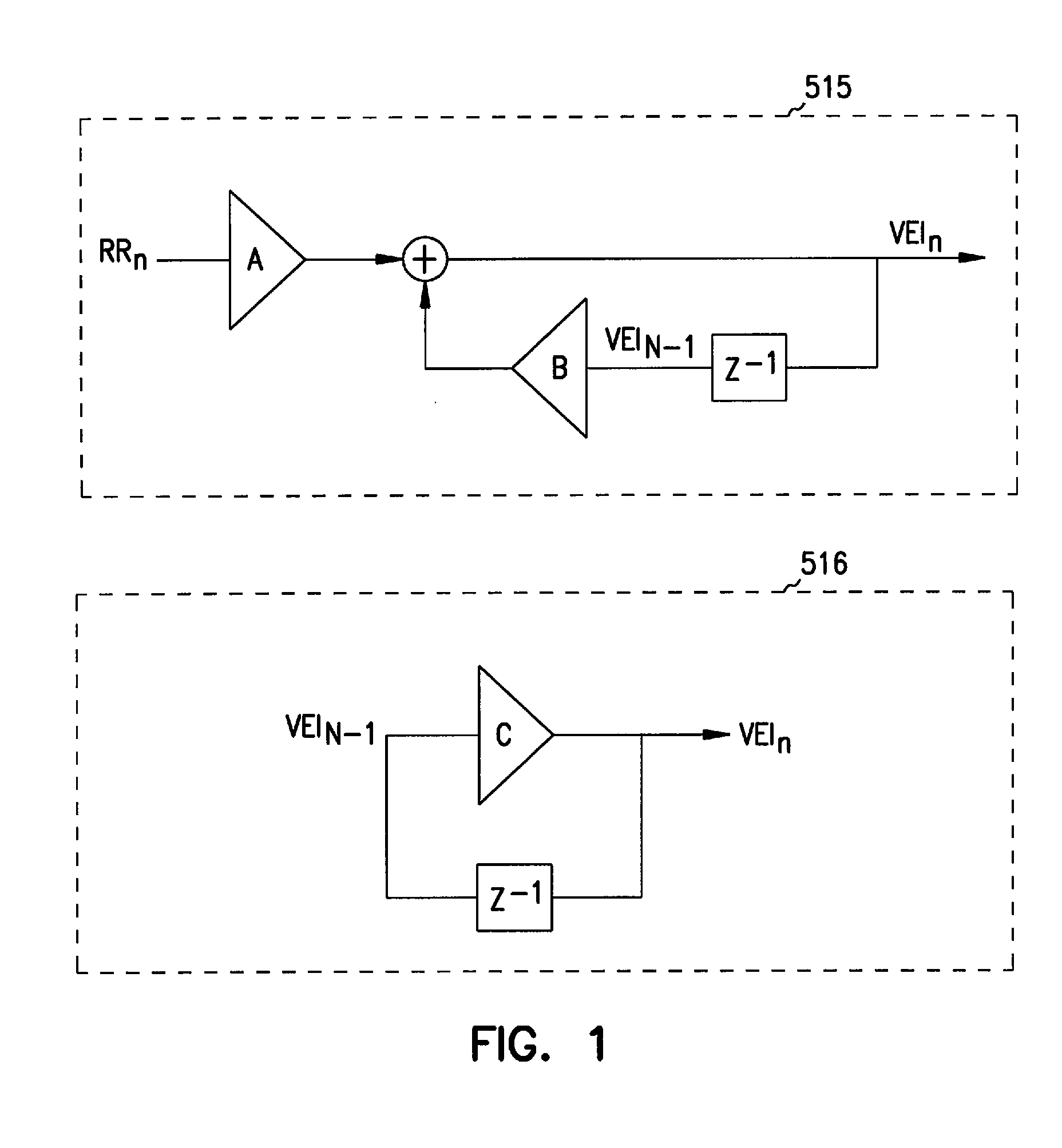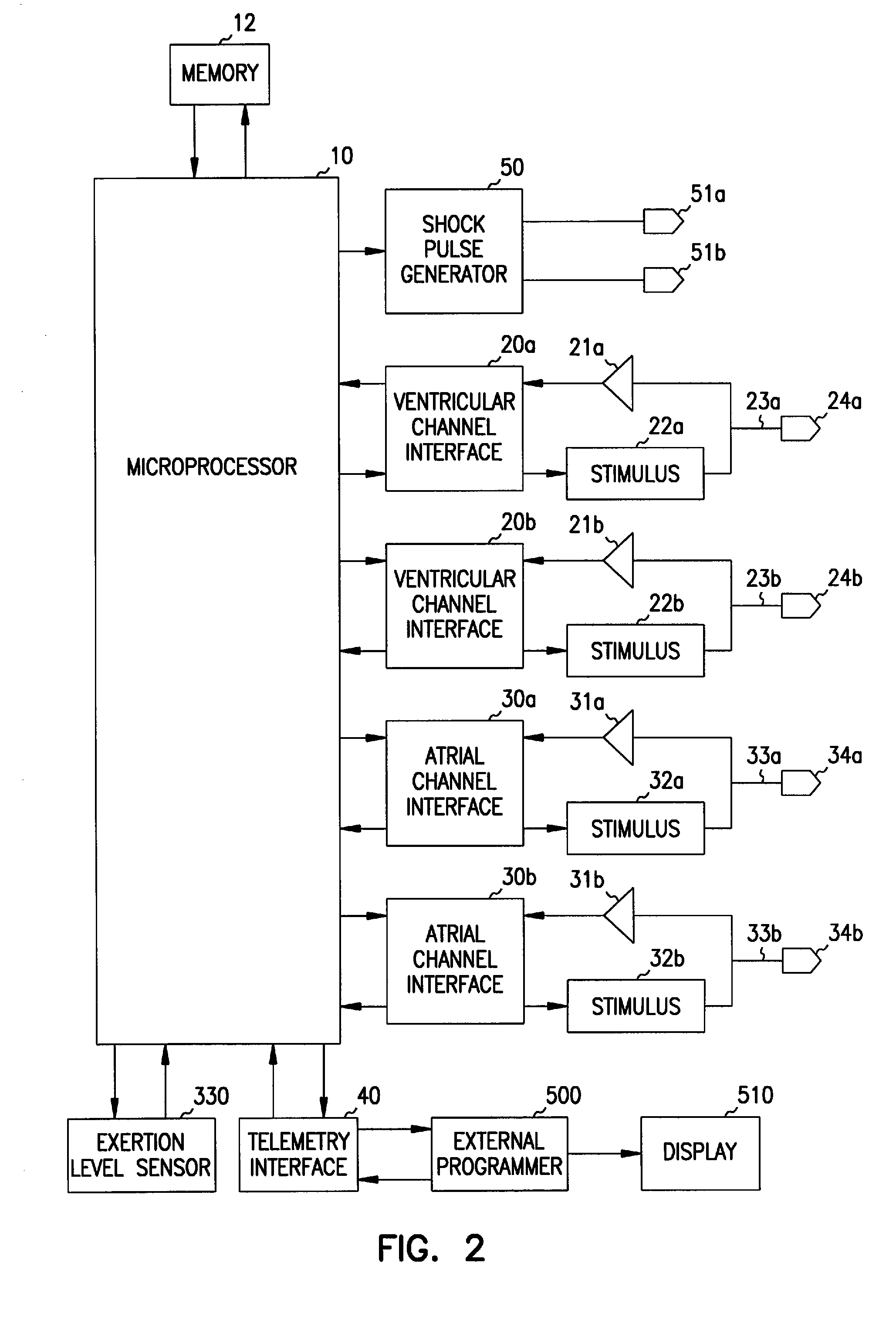Apparatus and method for ventricular rate regularization
a ventricular rate and apparatus technology, applied in the field of apparatus and method for ventricular rate regularization, can solve the problems of drug therapy not always effective, hemodynamic compromise or death, abnormal heart rhythms, etc., and achieve the effect of improving cardiac output, less variability in the overall ventricular rhythm, and improving the efficacy of ventricular resynchronization therapy
- Summary
- Abstract
- Description
- Claims
- Application Information
AI Technical Summary
Benefits of technology
Problems solved by technology
Method used
Image
Examples
Embodiment Construction
[0013] As will be described below, ventricular rate regularization may be advantageously applied together with a number of different cardiac rhythm management therapies. Ventricular rate regularization therapy may, for example, be implemented in a device configured to deliver conventional bradycardia pacing therapy to the atria and / or ventricles. Ventricular rate regularization may also be implemented in a device configured to deliver atrial or ventricular resynchronization therapy, where it has special advantages. Devices configured to deliver anti-tachyarrhythmia therapy in the form of ventricular defibrillation shocks may also use ventricular rate regularization when an irregular ventricular rate is detected that does not warrant a defibrillation shock. Finally, ventricular rate regularization is useful when implemented by an implantable atrial cardioverter / defibrillator both in maintaining hemodynamic stability when an episode of atrial fibrillation occurs and in facilitating th...
PUM
 Login to View More
Login to View More Abstract
Description
Claims
Application Information
 Login to View More
Login to View More - R&D
- Intellectual Property
- Life Sciences
- Materials
- Tech Scout
- Unparalleled Data Quality
- Higher Quality Content
- 60% Fewer Hallucinations
Browse by: Latest US Patents, China's latest patents, Technical Efficacy Thesaurus, Application Domain, Technology Topic, Popular Technical Reports.
© 2025 PatSnap. All rights reserved.Legal|Privacy policy|Modern Slavery Act Transparency Statement|Sitemap|About US| Contact US: help@patsnap.com



